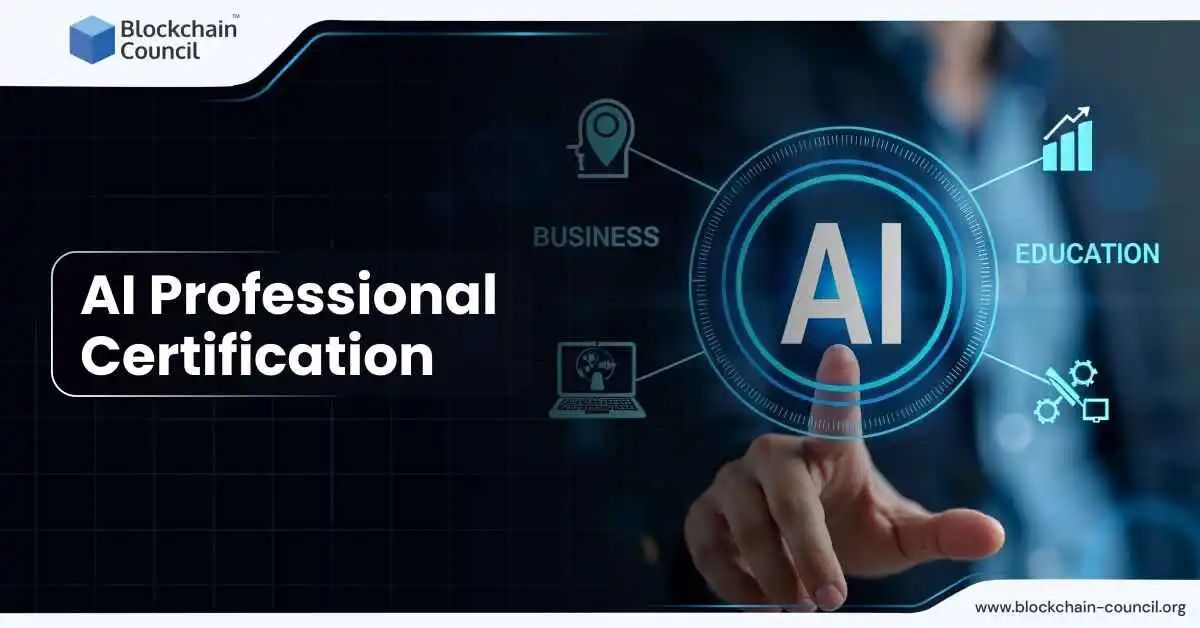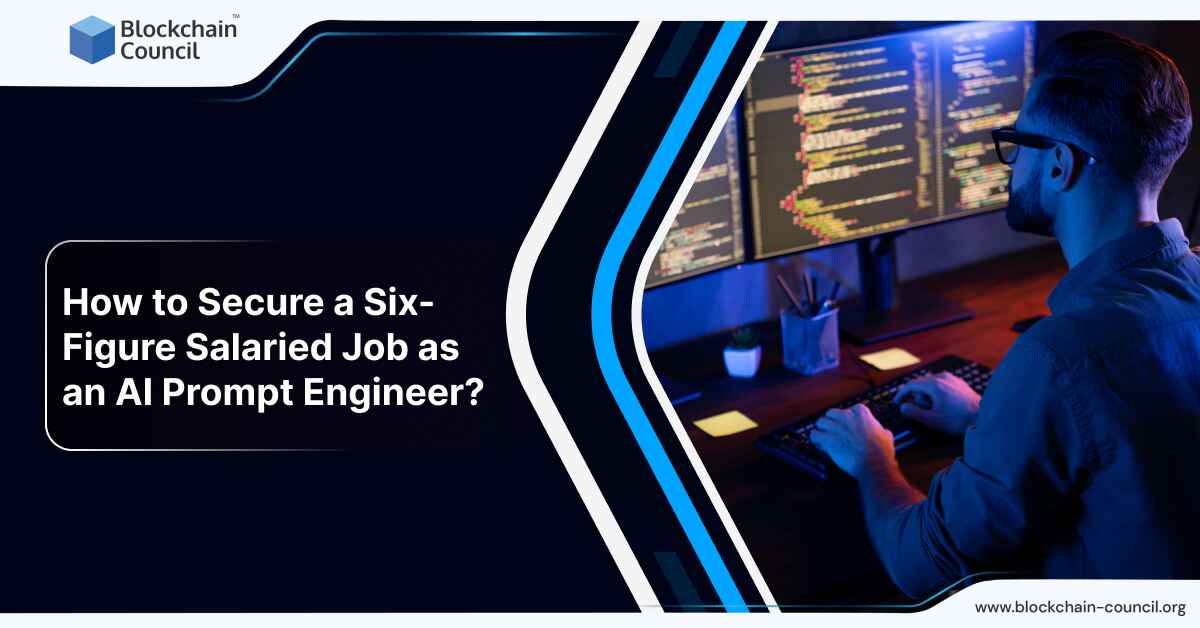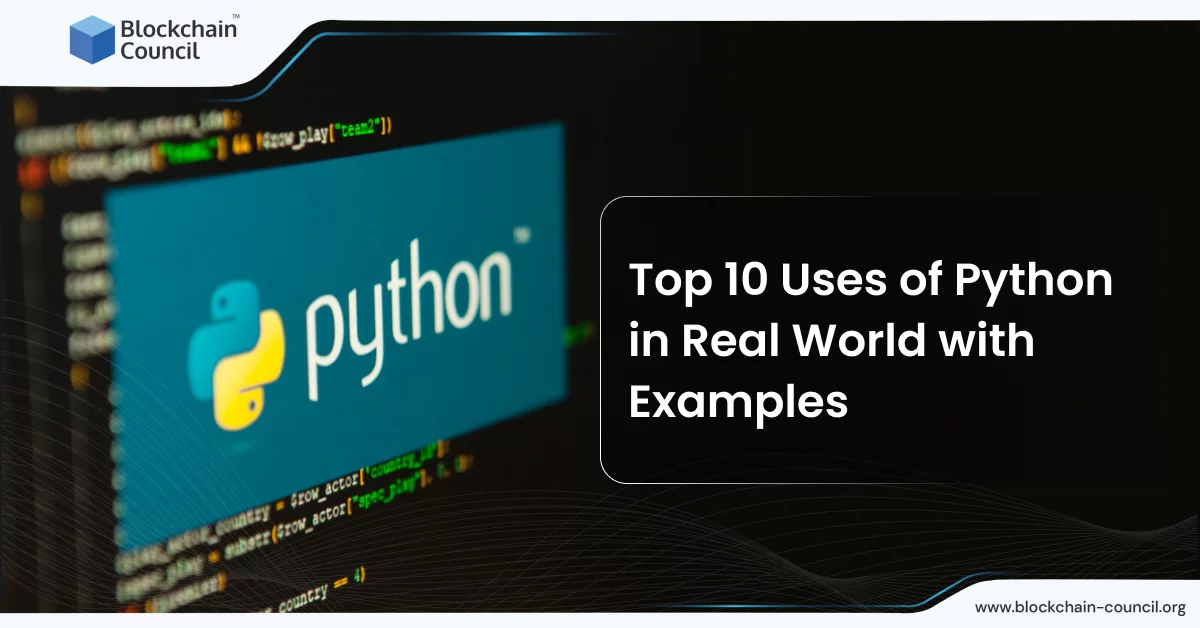
- Blockchain Council
- January 17, 2025
In 2025, the landscape of Deep Learning has evolved remarkably, driven by advancements in technology and a growing demand for sophisticated AI applications. This development has significant implications for professionals in the tech industry, emphasizing the importance of Deep Learning skills for career growth.
The Deep Learning job market in 2025 showcases impressive growth and vast opportunities. According to statistics, the machine learning and artificial intelligence sector is experiencing a significant increase in demand, with the United States Bureau of Labor Statistics predicting a 13% jump in computer-related occupations, many of which encompass machine learning roles, between 2016 and 2026. This underscores the burgeoning need for talent in this field. The average salary of a Deep Learning Engineer in the United States is more than $115,800 per year.
Machine learning job trends are on the rise in areas like natural language processing and Deep Learning, illustrating that the industry is branching out into diverse specializations and impacting various industries. This trend signifies that professionals with expertise in AI and ML are increasingly sought after across different sectors.
In this article, we will provide you with an in-depth overview of the current career landscape in Deep Learning, backed by the latest statistics. Additionally, we’ll delve into the top 20 Deep Learning interview questions and answers that will help you secure a high-paying job in this field.
Top 20 Deep Learning Interview Questions and Answers
1. What is Deep Learning?
- Deep Learning is a subset of machine learning that operates on artificial neural networks to simulate the human brain’s functioning.
- It learns from vast datasets to perform complex tasks like image and facial recognition, natural language processing, and more.
- Deep Learning models improve their accuracy over time as they are fed more data and adjust their internal parameters accordingly.
2. What is the difference between Machine Learning and Deep Learning?
- Machine Learning (ML) allows computers to learn by themselves using various algorithms, such as Naive Bayes and Logistic Regression.
- Deep Learning (DL) is a more advanced form of ML, using algorithms that mimic the human brain to create deeper data meanings.
- While ML is about learning logic and solutions, DL involves more data and complex tasks like facial recognition.
3. What is Perceptron? And how does it work?
- A Perceptron is a fundamental unit of a neural network, often used in DL.
- It works by receiving inputs, each assigned a specific weight.
- The Perceptron processes these inputs, calculates a weighted sum, and passes it through an activation function to produce an output.
4. How is Deep Learning better than Machine Learning?
- Deep Learning can handle and interpret vast amounts of data more efficiently than ML.
- It excels in complex tasks like image and speech recognition.
- DL models improve as they are exposed to more data, while ML models might plateau.
5. What are some of the most used applications of Deep Learning?
- Image Recognition: Deep Learning, like in Facebook and Instagram, helps identify faces and improve security.
- Speech Recognition: Virtual assistants like Alexa, Siri, and Google Assistant understand and respond to human speech using Deep Learning.
- Self-driving Cars: Tesla and Waymo use Deep Learning to detect objects, categorize them, and make driving decisions for safer autonomous vehicles.
- Natural Language Processing (NLP): Tools like GPT-3 generate human-like text and answer questions, thanks to Deep Learning.
- Translation: Google Translate uses Deep Learning to offer accurate translations between languages, understanding context and idioms.
6. What is the meaning of overfitting?
- Overfitting in Deep Learning occurs when a model learns the training data too well, including its noise and random fluctuations.
- As a result, it performs poorly on new, unseen data because it has essentially memorized the training data rather than learning to generalize from patterns.
- Overfitting is a common challenge and is tackled through methods like cross-validation, regularization, and training with more data.
7. What are activation functions?
- Activation functions in Deep Learning are critical for introducing non-linear properties to the network.
- This non-linearity helps neural networks learn and represent complex data patterns.
- Common activation functions include Sigmoid, Tanh, and ReLU. Sigmoid and Tanh have characteristic S-shapes, mapping input values to ranges between (0,1) and (-1,1) respectively.
- ReLU (Rectified Linear Unit), on the other hand, outputs the input directly if it is positive; otherwise, it outputs zero.
8. Why is the Fourier transform used in Deep Learning?
- The Fourier Transform is used in Deep Learning for its ability to transform time-domain data into frequency-domain.
- This is particularly useful in applications dealing with signals and images, as it allows neural networks to analyze the frequency components of the data.
- This can lead to more effective feature extraction, essential for tasks like speech recognition or image processing.
9. What are the steps involved in training a perceptron in Deep Learning?
Training a perceptron involves several steps:
- Initialize weights and biases with small random values.
- For each input in the training dataset, compute the output. This involves weighing the inputs, adding the bias, and applying an activation function.
- Calculate the error, which is the difference between the expected output and the perceptron’s output.
- Update the weights and bias based on the error, typically using a learning rate to control how much the weights are adjusted.
- Repeat the process for many iterations or until the error is minimized.
10. What is the use of the loss function?
- The loss function in Deep Learning is crucial for measuring the performance of the model.
- It calculates the difference between the model’s predictions and the actual data.
- During training, the goal is to minimize this loss, which effectively means improving the model’s accuracy.
- Common loss functions include Mean Squared Error for regression tasks and Cross-Entropy for classification tasks.
11.What is the role of weights and bias in a perceptron?
- Weights and bias are fundamental components of a perceptron in a neural network.
- Weights determine the strength of the input signals, and the bias allows the activation function to be shifted to the left or right, which helps in fine-tuning the output.
- During the learning process, the perceptron adjusts its weights and bias based on the error in its predictions, a process known as training or learning.
12. What challenges are involved in working with high dimensional data in Deep Learning?
- High-dimensional data presents unique challenges in Deep Learning.
- As dimensionality increases, the volume of the space increases exponentially, leading to data sparsity.
- This phenomenon, known as the “curse of dimensionality,” can make patterns in data harder to identify and models more complex and less efficient.
- Further, working with high-dimensional data in Deep Learning poses challenges like increased computational complexity, risk of overfitting, and the curse of dimensionality.
- Managing such data often requires advanced techniques to reduce dimensionality while preserving essential information.
13. What is the importance of feature selection in Deep Learning models?
- Feature selection is crucial in Deep Learning for enhancing model performance and interpretability.
- It involves choosing the most relevant features, reducing overfitting, and improving model efficiency.
- Techniques like LASSO regularization and Random Forest Importance are commonly used for this purpose.
14. How do you prevent overfitting in a Deep Learning model?
- To prevent overfitting in Deep Learning models, strategies like regularization, dropout layers, and cross-validation are employed.
- These techniques help in generalizing the model better to new, unseen data by controlling the complexity of the model.
15. Can you explain the concept of backpropagation?
- Backpropagation is a fundamental concept in neural networks, used for training purposes.
- It involves the propagation of the error backward through the network to adjust the weights and biases, thereby minimizing the difference between the actual and predicted outputs.
16. How do convolutional neural networks differ from fully connected neural networks?
- Convolutional Neural Networks (CNNs) specialize in processing data with grid-like topologies, like images.
- They use convolutional layers to filter inputs for useful information, making them efficient for image processing.
- Fully Connected Neural Networks (FCNNs), on the other hand, connect every neuron in one layer to every neuron in the next layer.
- This makes them more general-purpose but less efficient for spatial data like images.
17. What are the key components of a Neural Network?
- A neural network typically consists of an input layer, multiple hidden layers, and an output layer.
- Each layer contains neurons (nodes) interconnected by weights.
- The input layer receives the initial data, the hidden layers process this data through various computations and transformations, and the output layer provides the final result or prediction.
- The network also includes biases and activation functions to help the model learn complex patterns.
18. What are Autoencoders?
- Autoencoders are a type of neural network used for unsupervised learning.
- They work by compressing input data into a lower-dimensional code and then reconstructing the output back to the original input.
- This process is beneficial for tasks like dimensionality reduction, feature learning, and noise reduction.
19. Describe how LSTM networks work.
- LSTM (Long Short-Term Memory) networks are a special kind of Recurrent Neural Network (RNN) capable of learning long-term dependencies in data sequences.
- They are structured with LSTM units that include a cell (the memory part of the unit) and three gates (input, output, and forget gate).
- These gates control the flow of information into and out of the cell, allowing the network to retain important information over long periods and discard irrelevant data.
20.What is the role of an optimizer in Deep Learning?
- An optimizer in Deep Learning is an algorithm or method used to change the attributes of the neural network, such as weights and learning rate, to reduce the losses.
- Optimizers help in finding the minimum of the loss function, thereby improving the accuracy of the model.
- Common optimizers include Stochastic Gradient Descent (SGD), Adam, and RMSprop.
- Each optimizer has its own way of navigating the loss landscape to find the minimum loss efficiently.
Overview of Deep Learning
Advancements in Generative AI
The realm of generative AI has seen striking improvements. Tools like Runway’s Gen-2 model are creating high-quality videos, rivaling the outputs of top studios like Pixar. This technology is not only reshaping the film industry but also expanding into areas like marketing and training through deepfake technology. The integration of AI in these fields raises questions about the future of traditional roles and the importance of adapting to AI-driven methodologies.
AI and Disinformation
A pressing issue in 2024 is the widespread use of AI-generated disinformation, especially in political contexts. The ease of creating deepfakes and the realism of these generated contents pose a challenge in distinguishing between real and fake information, impacting various sectors including politics and media.
Robotic Multitasking
Inspired by generative AI techniques, the development of general-purpose robots capable of performing a range of tasks has accelerated. This shift is significant in robotics, moving away from specialized robots to more versatile, multi-functional ones. For example, DeepMind’s Robocat can control various robotic arms, learning through trial and error, a significant leap from the more typical single-arm training.
Natural Language Processing (NLP)
Deep Learning models have become more adept at understanding context and capturing the nuances of language. This enhancement in sentiment analysis and contextual relevance is pivotal for creating more efficient chatbots, dialogue systems, and language assistants, thus revolutionizing how we interact with AI in daily life.
Ethical Considerations and Bias Reduction
As Deep Learning technology permeates more sectors, the focus on ethics, fairness, transparency, and bias reduction in AI models has intensified. This is crucial in high-stakes fields like finance, criminal justice, and healthcare, where biased AI decisions can have significant societal impacts.
Hybrid Model Integration
The integration of various Deep Learning models and architectures is improving overall AI performance. Techniques like model stacking, pre-trained models, and combining different architectures are becoming more prevalent, allowing for more efficient problem-solving and enhanced AI capabilities.
Neuroscience-based Deep Learning
Leveraging insights from neuroscience to improve Deep Learning models is a growing trend. This interdisciplinary approach aims to develop more human-like AI models, enhancing pattern recognition, natural language comprehension, and reinforcement learning capabilities.
Vision Transformers (ViT)
ViT, a Deep Learning architecture, is revolutionizing computer vision tasks. It treats images as sequences of patches, applying Transformer models to process them, thus capturing contextual information more effectively than traditional models.
Conclusion
The global Deep Learning market is growing rapidly, from $17.97 billion in 2023 to an expected $25.15 billion in 2024, a 40.0% increase. This expansion is driven by factors such as global investments, adoption in autonomous systems, and improvements in explainability and interpretability of Deep Learning models. The market is anticipated to continue growing, reaching $100.02 billion by 2028, driven by advancements in healthcare, security, hybrid learning approaches, and cross-industry collaborations.
This article equips you with the knowledge and expertise required to ace Deep Learning interviews. Your career journey in Deep Learning starts here, with insights, statistics, and interview questions that will propel you toward success. Enroll for AI certifications by the Blockchain Council and embark on your path to a rewarding career in AI and its subfields like Deep Learning.
Frequently Asked Questions
How is generative AI shaping industries?
- Generative AI, exemplified by tools like Runway’s Gen-2 model, is revolutionizing industries such as film, marketing, and training through deepfake technology.
- This technology is creating high-quality videos that rival those produced by top studios like Pixar, impacting traditional roles and methodologies.
- Generative AI’s ease of creating deepfakes and their realism raises concerns about disinformation, especially in political contexts, affecting politics and media.
What are some trends in robotics and Deep Learning in 2025?
- Inspired by generative AI techniques, the development of general-purpose robots capable of performing various tasks has accelerated.
- DeepMind’s Robocat is an example, capable of controlling multiple robotic arms and learning through trial and error.
- This shift represents a move from specialized robots to more versatile, multi-functional ones in the field of robotics.
How is Deep Learning contributing to advancements in Natural Language Processing (NLP)?
- Deep Learning models have become more adept at understanding context and capturing nuances in language, enhancing sentiment analysis and contextual relevance.
- These improvements are pivotal for creating more efficient chatbots, dialogue systems, and language assistants, revolutionizing daily interactions with AI.
- The ability to comprehend context and nuances enhances the quality of responses and user experiences in NLP applications.





































































 Guides
Guides News
News Blockchain
Blockchain Cryptocurrency
& Digital Assets
Cryptocurrency
& Digital Assets Web3
Web3 Metaverse & NFTs
Metaverse & NFTs
